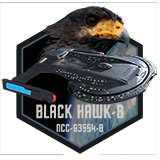Communications
One thing that can be difficult to secure is communications. A transmission can be overhead by anyone with a receiver tuned to the proper band, making communications vulnerable. A number of technological solutions have developed to keep communications private and prevent eavesdropping, but for every technique of covert communication, there is a way around it.
Encryption
Encryption is a complex mathematical algorithm that scrambles the information content of a transmission. The receiver can reconstruct the message using a special mathematical sequence called an encryption key. Encryption is handled by computers, which are capable of performing the massive calculations required. Complex encryption sequences are very difficult to break, requiring considerable time and computing power.
Piggybacking
A common means of covert communication is "piggybacking" a transmission within another, innocuous signal to prevent it from being noticed. This requires a carrier signal of the proper strength (like a subspace transmission) going in approximately the same direction that the message must travel, and detectable by the intended recipient.
One simple means of piggybacking a message is by sending an extremely simple signal, like Morse code or another repeating pattern. This can often be disguised as background noise or static. It's a Routine or Moderate Difficulty to send, but it's more difficult for the receiver to notice it unless they're expecting to get such a message.
Filtering Communications
With 24th century computer technology, it's a simple matter to modify the sounds and images transmitted in communications.
A communications filter changes the way the receiver sees and hears communications sent from the ship. For example, a filter might make the crew look like Cardassians, standing on the bridge of a Cardassian ship. This is a useful supplement to the other forms of deception. If a patrol ship's long range sensors tell them they are tracking a Cardassian freighter, and their communication with the ship shows a Cardassian crew on board, they're not likely to suspect that the vessel is really a Starfleet Nebula-class starship
Computer Systems
The center of nearly every security system in the 24th century is a computer. Control the computer, and you control the security system. The computer is the "brain" of a starship or installation, making it one of the parts most vulnerable to subversion and attack. Since the computer controls many functions automatically, completely outside the control of its crew, damage or sabotage of a ship's computer can sometimes leave it helpless.
Starship computers communicate with the outside world in a variety of different ways. They use the ship's external sensors to gather information for navigation, to avoid hazards to the ship and crew, and to provide the crew with useful information about their surroundings. They use internal sensors to monitor the locations of crew members, route communications, maintain environmental conditions, and dozens of other functions. Communications (both internal and external) are routed through the ship's computer, and the computer is in regular contact with outside sources of information like time-base beacons, surveillance satellites, probes, and similar objects. Computers on board stations, or planetside, function in much the same way.
